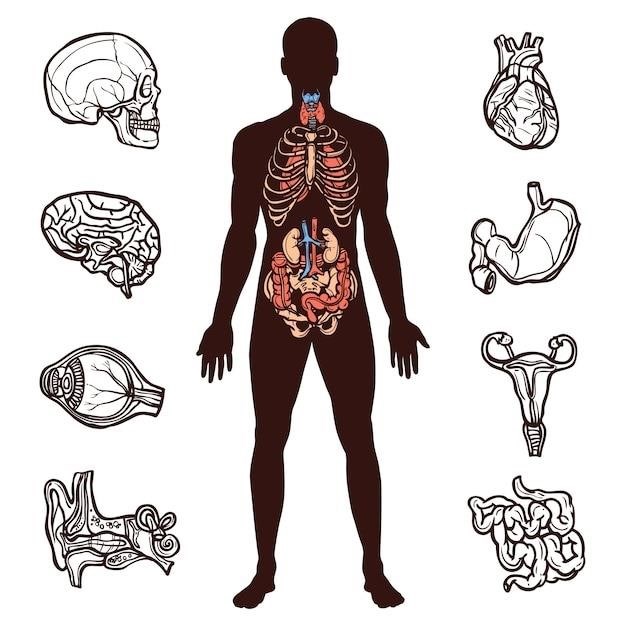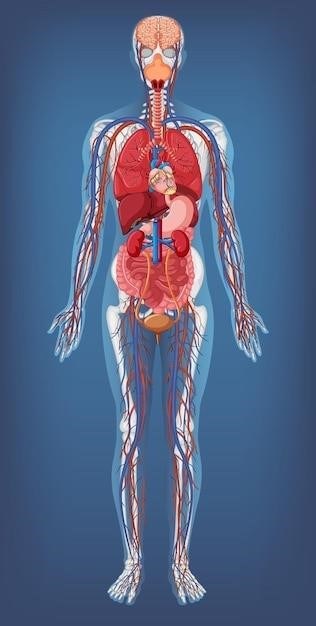Human Anatomy & Physiology Laboratory Manual⁚ Cat Version
This best-selling laboratory manual features a wide variety of exercises and activities designed to meet the needs of any 2-semester anatomy & physiology course.
Overview
The Human Anatomy & Physiology Laboratory Manual⁚ Cat Version is an indispensable resource for students taking a two-semester anatomy and physiology course. It is designed to provide a comprehensive hands-on learning experience, guiding students through a series of dissection exercises and investigations of the feline anatomy. The manual is known for its thorough, clearly-written exercises, full-color illustrations, and tear-out review sheets, all of which contribute to a rich and engaging laboratory experience. This manual is an essential companion to any anatomy and physiology textbook, offering a practical approach to understanding the complexities of the human body through the lens of comparative anatomy.
The Cat as a Model Organism
The domestic cat (Felis catus) serves as an excellent model organism for studying human anatomy and physiology due to its anatomical similarities to humans. The cat’s body systems, including the cardiovascular, digestive, respiratory, urinary, nervous, and musculoskeletal systems, share fundamental structures and functions with those of humans. This makes the cat a valuable tool for understanding the principles of human anatomy and physiology in a hands-on, comparative context. Furthermore, the cat’s relatively small size and readily available dissection specimens make it a practical choice for laboratory exercises. Dissecting a cat allows students to visualize and explore the intricacies of anatomical structures, providing a deeper understanding of their form and function, which in turn enhances their comprehension of the human body.
Dissection Exercises
The laboratory manual offers a series of dissection exercises designed to provide students with a comprehensive understanding of feline anatomy and its relation to human anatomy. These exercises cover a range of systems, from the cardiovascular and digestive systems to the respiratory, urinary, nervous, and musculoskeletal systems. Each exercise includes detailed instructions, illustrations, and diagrams to guide students through the dissection process. Students will learn to identify and dissect key anatomical structures, understand their functions, and compare them to their human counterparts. The exercises also incorporate critical thinking questions and clinical applications, encouraging students to analyze and interpret the anatomical findings in the context of human health and disease.
Cat Dissection Techniques
The laboratory manual provides detailed instructions on proper cat dissection techniques, emphasizing safety and ethical considerations. Students learn to use appropriate tools and instruments, including scalpels, scissors, forceps, and probes, to carefully expose and examine anatomical structures. The manual also covers techniques for preserving specimens, such as injection with preservatives and proper storage. Students are guided through a step-by-step process for each dissection exercise, ensuring a systematic and thorough exploration of the cat’s anatomy. The manual also emphasizes the importance of accurate observation, detailed recording of findings, and careful handling of the specimen throughout the dissection process.
Cardiovascular System
This section of the laboratory manual delves into the intricate workings of the feline cardiovascular system. Students will dissect and examine the heart, tracing the flow of blood through its chambers and valves. They will identify major blood vessels, including the aorta, vena cava, and pulmonary arteries and veins, understanding their roles in transporting oxygenated and deoxygenated blood. The manual provides detailed descriptions of the heart’s structure, including the pericardium, myocardium, and endocardium, along with the functions of the different chambers and valves. Students will gain a comprehensive understanding of how the cardiovascular system ensures efficient oxygen and nutrient delivery to the body while removing waste products.

Digestive System
The digestive system dissection exercise in the laboratory manual provides a hands-on exploration of the cat’s alimentary canal. Students will meticulously dissect and identify key organs, including the mouth, esophagus, stomach, small intestine, large intestine, and rectum, gaining insights into their respective roles in food breakdown and nutrient absorption. The manual offers detailed descriptions of the structure and function of each organ, highlighting the presence of specialized tissues like the muscularis layer for peristalsis and the epithelial lining for absorption. Students will investigate the processes of mechanical and chemical digestion, understanding how enzymes and muscular contractions contribute to the breakdown of food into usable nutrients. This exercise provides a comprehensive understanding of the digestive system’s vital role in nutrient uptake and waste elimination.
Respiratory System
The respiratory system dissection exercise delves into the intricate workings of the cat’s air exchange system. Students will carefully dissect and examine the nasal cavity, pharynx, larynx, trachea, bronchi, and lungs, identifying the structural features crucial for respiration. The manual provides detailed descriptions of the delicate tissues, like the ciliated epithelium that lines the airways, and the cartilaginous rings that maintain the trachea’s shape. Students will gain a deeper understanding of the mechanics of breathing, including the role of the diaphragm and intercostal muscles in expanding and contracting the chest cavity. The dissection will reveal the branching of the bronchi into bronchioles and the microscopic alveoli where gas exchange takes place, emphasizing the vital connection between the respiratory and circulatory systems. This exercise fosters a comprehensive understanding of the respiratory system’s essential role in oxygen uptake and carbon dioxide removal.
Urinary System
The urinary system dissection exercise provides a detailed exploration of the cat’s organs responsible for waste filtration and excretion. Students will carefully dissect and examine the kidneys, ureters, urinary bladder, and urethra, identifying their distinct structures and functions. The manual guides them through the intricate network of nephrons within the kidneys, highlighting the processes of filtration, reabsorption, and secretion that maintain fluid and electrolyte balance. Students will learn about the structure of the ureters, which transport urine from the kidneys to the bladder, and the bladder’s role in storing and expelling urine. The dissection will reveal the muscular nature of the bladder wall, enabling its expansion and contraction, and the urethral sphincters that control urine flow. This exercise provides a comprehensive understanding of the urinary system’s vital role in maintaining homeostasis and eliminating waste products from the body.
Nervous System
The nervous system dissection provides a captivating exploration of the intricate network that controls and coordinates all bodily functions. Students will carefully dissect and examine the brain, spinal cord, and peripheral nerves, identifying their distinct structures and functions. The manual guides them through the complex organization of the brain, highlighting the various lobes and their specialized roles in sensory perception, motor control, language, and thought. Students will trace the delicate pathways of the spinal cord, observing how it transmits signals between the brain and the rest of the body. The dissection will also reveal the intricate branching pattern of peripheral nerves, understanding how they connect the central nervous system to muscles, glands, and sensory organs. This exercise provides a profound understanding of the nervous system’s vital role in communication, sensation, movement, and maintaining homeostasis.
Musculoskeletal System
The musculoskeletal system dissection delves into the intricate relationship between bones, muscles, and joints, providing a hands-on understanding of how movement is generated and controlled. Students will carefully dissect and identify the major bones of the cat’s skeleton, noting their shapes, sizes, and articulations. They will explore the structure of different types of joints, understanding how they allow for varying degrees of movement. The dissection also reveals the intricate arrangement of muscles, showcasing their attachments to bones and their roles in locomotion, posture, and facial expression. Students will investigate the organization of muscle fibers and their relationship to tendons, gaining insight into the mechanisms of muscle contraction and force generation. This exercise provides a comprehensive understanding of the musculoskeletal system’s vital role in supporting the body, enabling movement, and protecting internal organs.
Laboratory Safety
Laboratory safety is paramount in any dissection-based course, and the Human Anatomy & Physiology Laboratory Manual⁚ Cat Version emphasizes this principle. Students are instructed on proper handling of dissecting tools, including scalpels, forceps, and scissors, to minimize the risk of cuts or punctures. Emphasis is placed on the safe disposal of biological materials, including the proper use of biohazard containers for tissues and organs. Students are also educated on the importance of handwashing before and after dissections to prevent the spread of bacteria and viruses. Additionally, the manual stresses the need for proper ventilation and the use of protective eyewear to safeguard against potential splashes or airborne particles. The manual also emphasizes the ethical considerations involved in using animals for scientific study, promoting respectful treatment and minimizing any potential harm. By following these guidelines, students can conduct dissections safely and responsibly, ensuring a positive and enriching learning experience.
Ethical Considerations
The Human Anatomy & Physiology Laboratory Manual⁚ Cat Version acknowledges the ethical considerations surrounding the use of animals in scientific research. The manual emphasizes the importance of treating the cat specimens with respect and dignity, recognizing them as living organisms that have served a purpose in furthering scientific understanding. Students are encouraged to approach dissections with a sense of seriousness and responsibility, recognizing the value of the specimens and the importance of minimizing any potential harm. The manual also stresses the importance of proper animal care, including humane euthanasia and the use of animals only when necessary. It emphasizes the ethical obligation to use animals only when there are no alternative methods available and to conduct research in a way that minimizes pain and suffering. By adhering to these ethical principles, the manual aims to foster a responsible and respectful approach to animal dissection, promoting a balance between scientific advancement and ethical considerations.
Resources and References
The Human Anatomy & Physiology Laboratory Manual⁚ Cat Version provides a comprehensive set of resources to support student learning. The manual includes a variety of anatomical illustrations, diagrams, and photographs, accompanied by clear and concise descriptions of structures and functions. Additionally, the manual may provide access to digital resources, such as online tutorials, interactive simulations, and virtual dissections. Students are encouraged to utilize these resources to enhance their understanding of the material covered in the lab exercises; The manual also includes a list of references for further reading, providing students with access to additional information and perspectives on the topics covered. By providing these resources, the manual aims to facilitate a deeper understanding of human anatomy and physiology and to encourage students to explore the subject matter beyond the lab exercises.
The Human Anatomy & Physiology Laboratory Manual⁚ Cat Version offers a valuable tool for students seeking a hands-on learning experience in anatomy and physiology. Through a combination of dissection exercises, detailed descriptions, and visual aids, the manual provides students with a comprehensive understanding of the structures and functions of the human body. While the use of animal models in dissection can spark ethical considerations, the manual aims to emphasize the importance of responsible and respectful treatment of the specimens. Ultimately, the manual serves as a vital resource for students to develop their anatomical knowledge, practical skills, and appreciation for the complexity and wonder of the human body.


